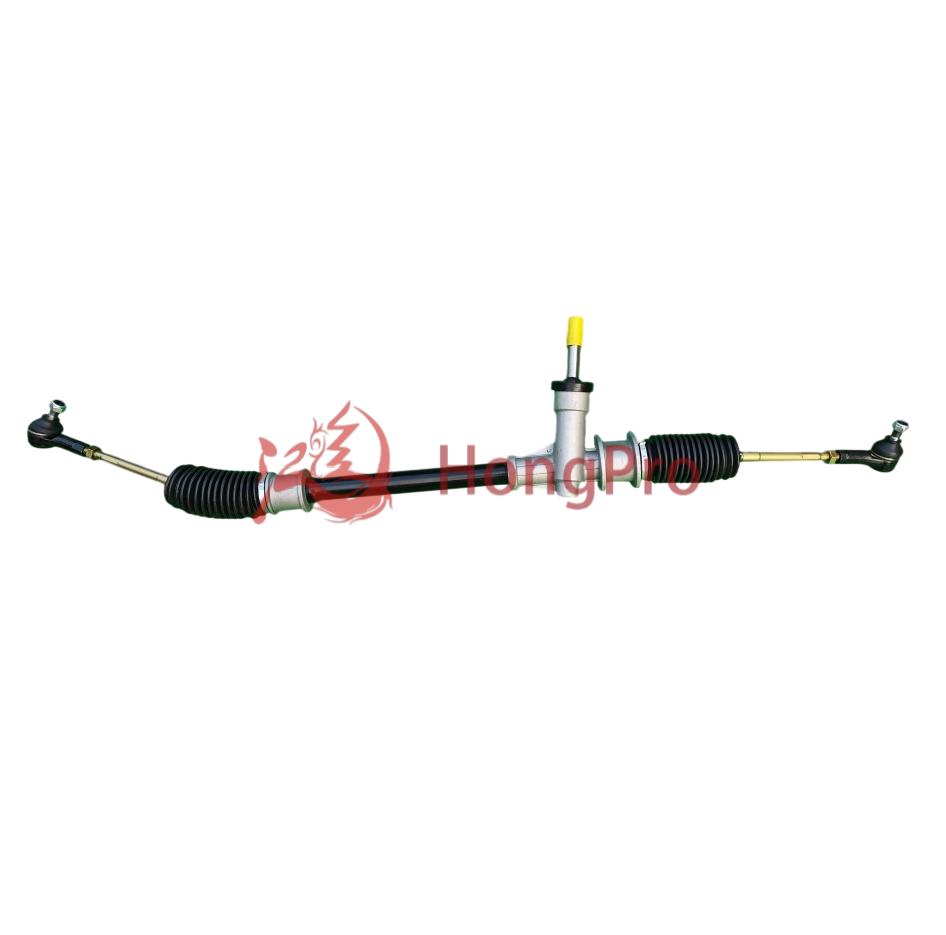












The steering rack is a pivotal component in the steering system of modern vehicles. It plays a crucial role in translating the rotational motion of the steering wheel into the linear motion needed to turn the vehicle's wheels. This article delves into the intricacies of the steering rack, exploring its functions, types, and importance within the broader steering system. By understanding these elements, automotive professionals and enthusiasts can better appreciate the engineering marvels that contribute to vehicle safety and performance.

The steering rack is an integral part of the rack and pinion steering system, which is widely used in modern vehicles due to its simplicity and efficiency. This system consists of a circular gear (the pinion) which engages with a linear gear (the rack). When the driver turns the steering wheel, the pinion rotates, moving the rack to the left or right, thus steering the wheels in the desired direction. This mechanism provides a direct and responsive steering feel, which is highly valued in both passenger and performance vehicles.
A typical steering rack assembly includes several key components: the rack itself, the pinion gear, tie rods, and the housing. The rack is a metal bar with teeth cut into it, which mesh with the pinion gear. The tie rods connect the ends of the rack to the steering knuckles, allowing for the transfer of motion to the wheels. The housing encases the rack and pinion, providing protection and maintaining the alignment of the components. Additionally, many steering racks are equipped with hydraulic or electric power assist systems to reduce the effort required to steer the vehicle.
There are primarily two types of steering racks used in vehicles: manual and power-assisted. Manual steering racks rely solely on the driver's physical effort to turn the wheels, making them simpler and lighter but more demanding to operate, especially at low speeds. Power-assisted steering racks, on the other hand, use hydraulic or electric systems to provide additional force, making steering easier and more comfortable. Hydraulic power steering racks use a pump driven by the engine to circulate fluid and assist with steering, while electric power steering racks use an electric motor to provide assistance, offering advantages in efficiency and control.
The steering rack is a critical component in the steering system, influencing vehicle handling and safety. Its design and condition directly affect the vehicle's steering precision, feedback, and response time. A well-maintained steering rack ensures that the driver can accurately control the vehicle, enhancing safety and driving enjoyment. Conversely, a worn or damaged steering rack can lead to vague steering feel, increased effort, and even dangerous handling characteristics.
Steering precision and feedback are essential for driver confidence and vehicle control. The steering rack's ability to translate steering wheel input into precise wheel movement is crucial for maintaining the intended driving line, especially in high-performance and emergency situations. Feedback from the steering system allows the driver to feel the road surface and vehicle dynamics, providing vital information for making informed driving decisions. A high-quality steering rack with minimal play and precise gearing is essential for delivering the desired level of precision and feedback.
The steering rack's role in vehicle safety cannot be overstated. A malfunctioning steering rack can lead to steering failure, resulting in loss of control and potential accidents. Regular inspection and maintenance of the steering rack are vital to ensure its proper function and reliability. Signs of a failing steering rack include unusual noises during steering, increased steering effort, and uneven tire wear. Addressing these issues promptly can prevent more severe problems and maintain the vehicle's safety.
Proper maintenance of the steering rack is essential for ensuring its longevity and performance. Regular inspections should be conducted to check for signs of wear, leaks, and damage. The steering rack boots, which protect the internal components from dirt and moisture, should be inspected for tears or deterioration. Additionally, the power steering fluid level and condition should be monitored, as low or contaminated fluid can lead to increased wear and potential failure of the steering rack.
Several common issues can affect steering racks, including leaks, worn gears, and damaged tie rods. Leaks in hydraulic steering racks can result from worn seals or damaged hoses, leading to a loss of power assist and increased steering effort. Worn gears can cause play in the steering, reducing precision and feedback. Damaged tie rods can lead to alignment issues and uneven tire wear. Identifying and addressing these issues early can prevent more extensive damage and costly repairs.
When repairing or replacing a steering rack, it is essential to use high-quality components and follow the manufacturer's specifications. Rebuilt or remanufactured steering racks can be a cost-effective option, provided they meet the necessary quality standards. Proper installation and alignment are crucial to ensure the steering rack functions correctly and provides the desired performance. In some cases, upgrading to a performance steering rack may be beneficial for enthusiasts seeking improved handling and feedback.
The steering rack is a vital component of the vehicle's steering system, playing a crucial role in translating driver input into wheel movement. Understanding its function, types, and maintenance requirements is essential for ensuring vehicle safety and performance. By maintaining the steering rack in optimal condition, drivers can enjoy precise steering, enhanced feedback, and improved vehicle control. For more information on steering racks and other automotive components, visit the steering parts section of our website.